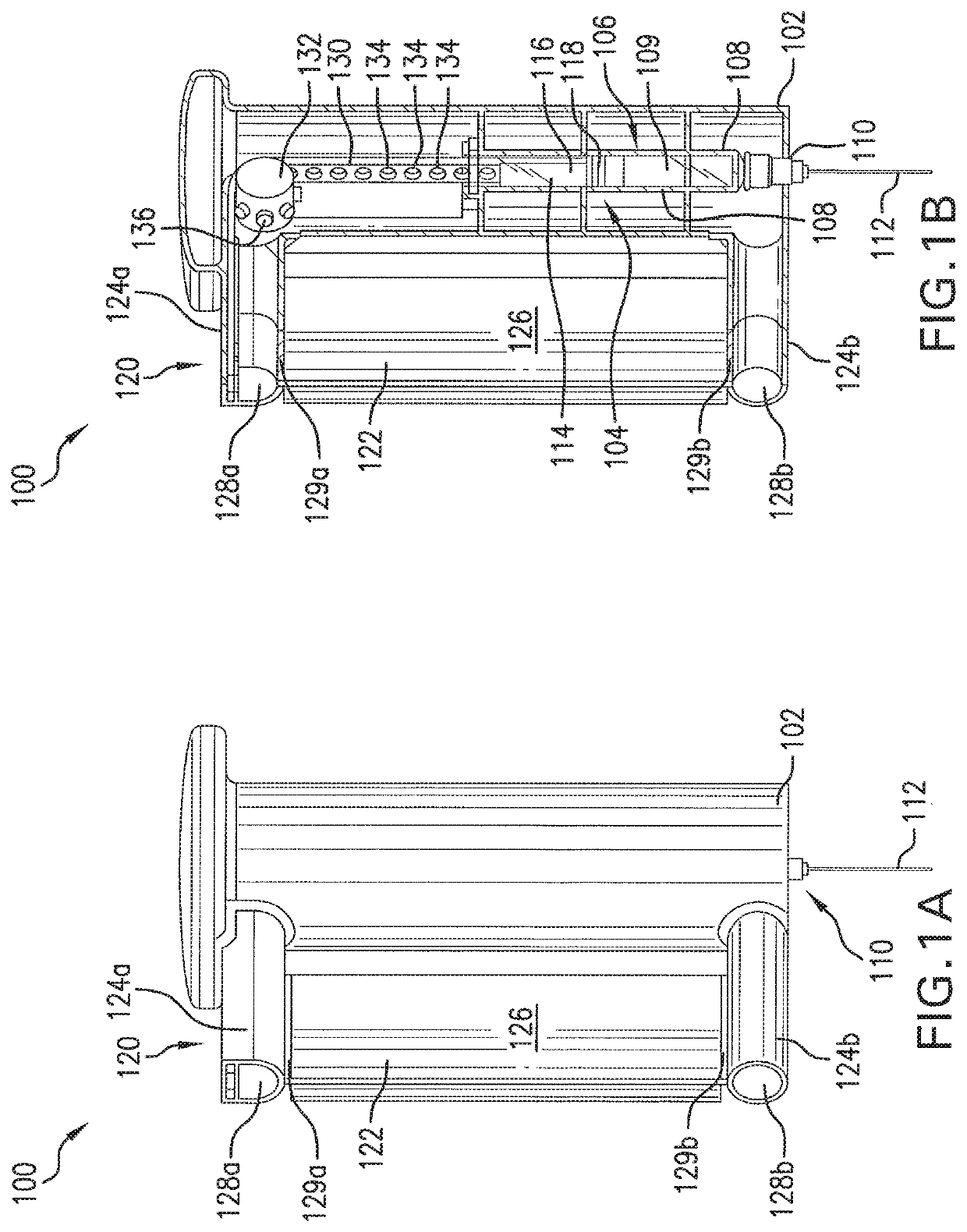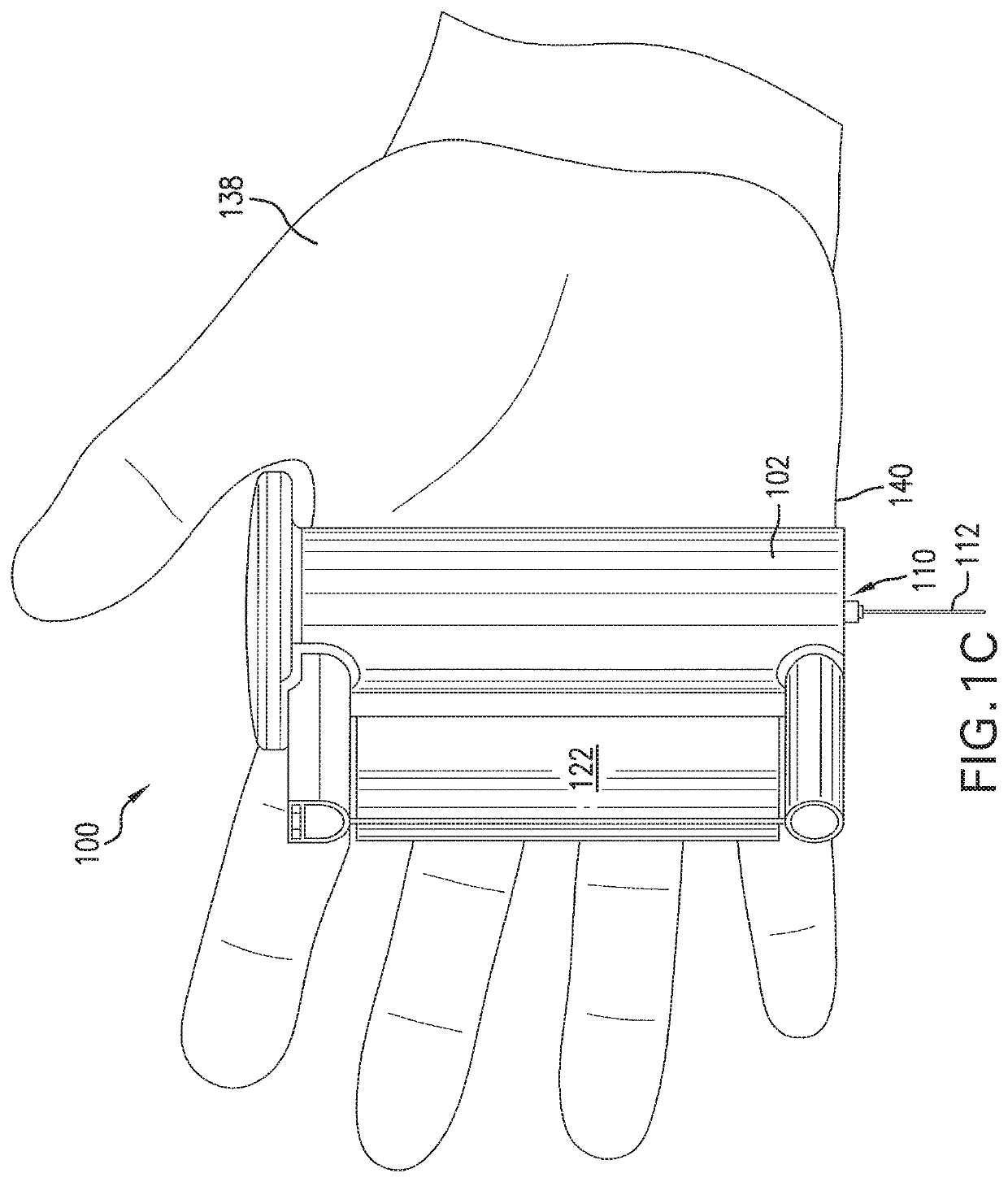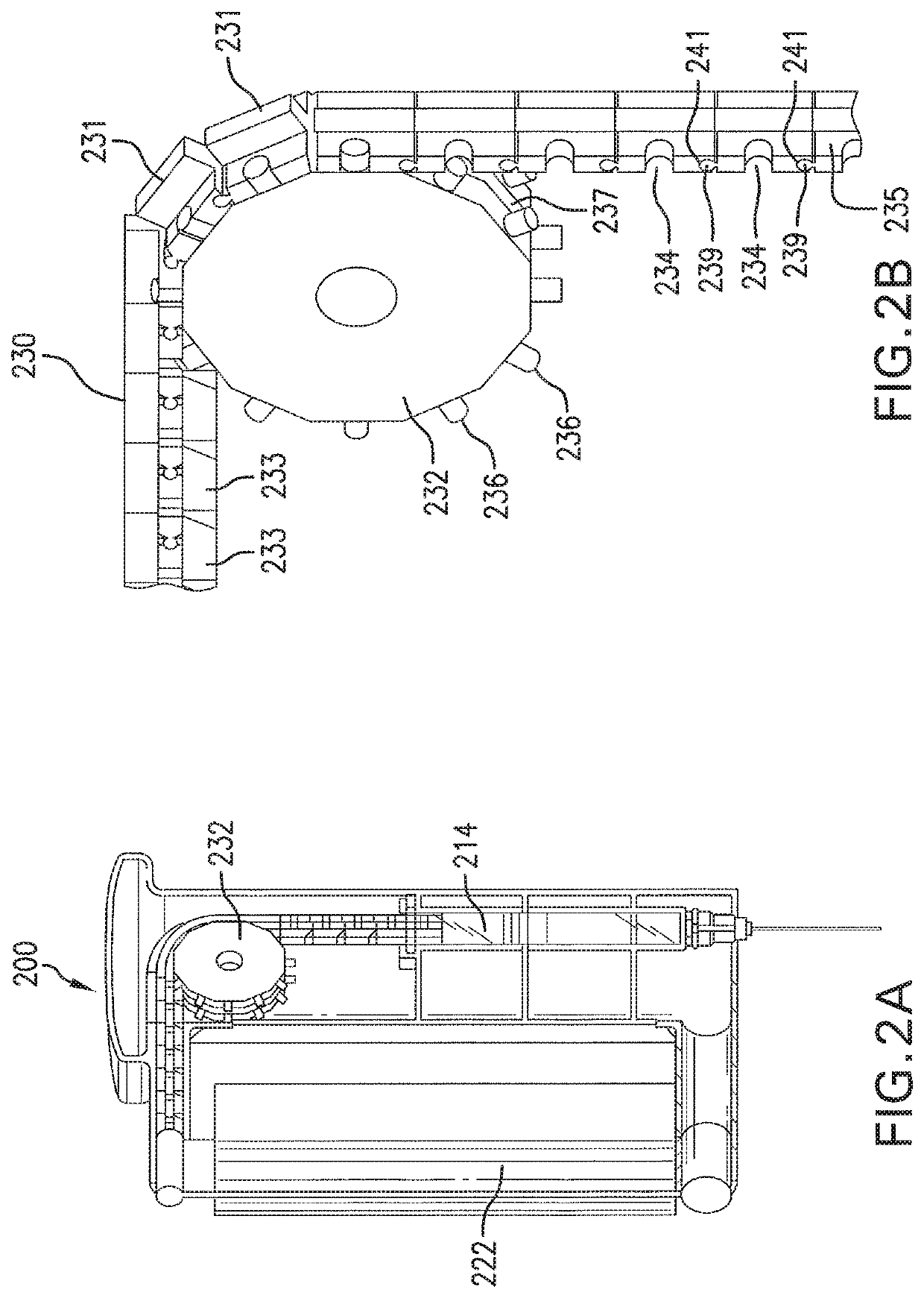Manually-actuated injection device for high-viscosity drugs
a technology of injection device and high-viscosity drug, which is applied in the direction of medical syringes, infusion syringes, ampoule syringes, etc., can solve the problems of reducing treatment efficacy, difficult to ensure the complete dose is delivered, and difficulty in injecting drugs, so as to facilitate the injection of drugs, improve the injection experience, and the effect of high viscosity
- Summary
- Abstract
- Description
- Claims
- Application Information
AI Technical Summary
Benefits of technology
Problems solved by technology
Method used
Image
Examples
first embodiment
[0028]an injection device 100 according to the invention is illustrated in FIGS. 1A, 1B, and 1C. The injection device 100 includes a generally elongated housing 102, which is formed, e.g., by injection molding, from medical-grade material such as plastic. Suitably, the housing 102 is formed from two symmetric halves, which can be secured together, e.g., by barbed pins, ultrasonic welding, or other suitable means, after various internal components—including, in most embodiments, a prefilled hypodermic syringe assembly 104—have been assembled into the housing 102.
[0029]A medication-receiving space or chamber 106, which is configured to receive a dose of medication therein, is formed within the housing 102. For example, the chamber 106 may be formed by contoured sidewalls 108, which surround or otherwise engage and securely hold the syringe portion 109 of the syringe assembly 104 when the halves of the housing 102 are assembled together. Although the term “chamber” is used herein, for ...
embodiment 300
[0040]For example, as illustrated in FIGS. 3A, 3B, and 3C, in an embodiment 300 of an injection device according to the invention, the grip member 322 is pivotally connected to the housing 302 at a pivot point 323 that is generally near the lower, injection end of the injection device 300. This configuration allows the grip member 322 to pivot toward the portion of the housing 302 containing the medication as the grip member 322 is gripped and squeezed, which may be more comfortable for some users. Furthermore, a constant-force, wound-coil spring (not illustrated) may be connected to the pinion gear 332 to reduce sensed resistance and enhance ease of use. Medication-injecting operation of the injection device 300, which utilizes a force-transmitting chain 330 that is the same as or similar to that used in the injection device 200 as its force transmission mechanism, is similar to the same as operation of the injection device 200.
[0041]Thus, as further illustrated in FIGS. 3A, 3B, an...
embodiment 600
[0051]As shown in FIG. 6B, the hypodermic needle 612 is then inserted into the patient's body 645 at the injection site (which insertion action depresses the protective sleeve 646 into the housing 602), and the grip member 622 is squeezed to cause it to pivot back toward the housing 602. As the grip member 622 pivots toward the housing 602, rigid linkage member 630 applies a forward-acting force to the ratchet block 656; because the teeth of the ratchet block 656 and the ratchet rod 662 are configured to prevent relative movement between the ratchet block 656 and the ratchet rod 662 when the ratchet block is moving forwardly, the ratchet block 656 forces the plunger 616 and piston 618 of the syringe assembly 604 forward, thereby causing medication contained within the syringe to be injected into the patient's body 645. In this embodiment 600, force amplification will vary generally sinusoidally with the position of the grip member 622, as angles between the linkage member 630, the g...
PUM
 Login to View More
Login to View More Abstract
Description
Claims
Application Information
 Login to View More
Login to View More - R&D
- Intellectual Property
- Life Sciences
- Materials
- Tech Scout
- Unparalleled Data Quality
- Higher Quality Content
- 60% Fewer Hallucinations
Browse by: Latest US Patents, China's latest patents, Technical Efficacy Thesaurus, Application Domain, Technology Topic, Popular Technical Reports.
© 2025 PatSnap. All rights reserved.Legal|Privacy policy|Modern Slavery Act Transparency Statement|Sitemap|About US| Contact US: help@patsnap.com



